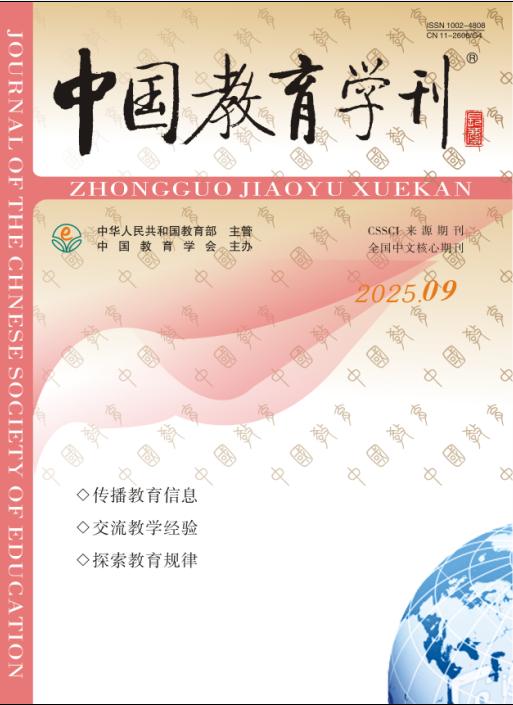节点文献
On Ambiguity in English
【关键词】 ;
【正文】Abstract: Ambiguity is a common phenomenon in all languages as a result of the principle of economy and efficiency. This paper studies this linguistic phenomenon from four levels: phonological, lexical, syntactic and pragmatic.
Key words: Ambiguity; causes of ambiguity
1. Introduction
Ambiguity should be defined as a special kind of relationship between structure and meaning and sentence is ambiguous when having the same structural form but more than one kind of meaning (Qiu Shude, 1998). Ambiguity is a natural phenomenon in all languages, including in English. Within the words which are composed with limited phoneme, there are large amounts of homonym; among the vocabulary which is made up with limited writing figures, there exist great number of polysemous words; in the phrases and sentences which subject to limited grammar rules and structural framing vagueness is very common.
In order to understand ambiguity better, we must distinguish ambiguity from fuzziness, vagueness, and generality which are always mistaken for ambiguity.
2. Causes Resulting in Ambiguity
The most accepted and useful classification of ambiguity is based on the causes resulting in ambiguity, namely: phonological ambiguity, lexical ambiguity, syntactic ambiguity as well as pragmatic ambiguity.
2.1 Causes Resulting in Phonological Ambiguity
Sound is the primary medium for all languages. We all know, colloquial style and writing style are closely related, there exists overlap in phonological level and lexical level naturally. There are following three main factors attributing to the phonological ambiguity---homonym, liaison and stress.
Homonym are words which are pronounced in the same way but differ in meaning. Liaison refers to the linking between sounds and words. It occurs when a word starting with a vowel links sound with the preceding word ending in a vowel, a constant or voiceless [r]. The effect of liaison is making the connected speech easy and smooth. But it will also cause ambiguity. Stress means the degree of force used in producing a syllable. There are word stress and sentence stress.
(1) I meet ['naismn].
a. I meet a nice man.
b. I meet an ice man(the man who sells ice).
(2) This is a [dɑ:krum].
a. This is a dark 'room ( a room with inadequate light).
b. This is a 'darkroom ( a room in which photographs are developed).
2.2 Causes Resulting in Lexical Ambiguity
Just as the name implies, ambiguity in lexical level is caused by the lexical factors. This kind of ambiguity is an important one and should be paid enough attention. Three main factors lead to the lexical ambiguity---polysemy, different uses of words in American English and British English, as well as the changes of the word meaning.
Polysemy is the ambiguity of an individual word or phrase that can be used of in different contexts to express two or more different meanings.
(3) She can’t bear children.
a. She can’t give birth to the children for she is sterile.
b. She can’t tolerate the children perhaps for they are noisy and naughty.
2.3 Causes Resulting in Syntactic Ambiguity
Syntactic ambiguity is also called structural ambiguity or grammatical ambiguity. It refers to the ambiguity which is caused by the different interpretations of syntactic structure of sentences. And according to Chomsky’s Transformation and Generative grammar, a surface structure and a deep structure exist in every sentence, while deep structure is an abstract level of structural organization in which all elements determining structural interpretation are represented (George Yale, 1996).
(4) The chicken is too hot to eat.
a. The chicken feels to hot to eat anything. (The chicken is the logical subject of the infinitive to eat.)
b. The chicken is so hot that nobody can eat it. (The chicken is the logical object of the infinitive to eat.)
(5) Don’t write anything on your note.
a. Write nothing on your note. (Full negation)
b. Don’t write all things on your note. (Partial negation)
2.4. Causes Resulting in Pragmatic Ambiguity
According to Thomas (1995) in Meaning in Interaction: An Introduction to Pragmatics, pragmatic ambiguity is kind of phenomenon that the addresser conveys several illocutionary acts or in particular context by using uncertain, vague or indirect words to the addressee. Pragmatic ambiguity is different from the above mentioned ambiguity for it emerges from special context on which speaker and listener depends.
(6) Is the coat on the floor yours?
The utterance contains a locution as well as an illocution. The locution is a yes or no question about the owner of the coat. The locution may be a request that ask the hearer pick up the coat from the floor.
References:
1. Austin, J.L. 1962.How to Do Things with Words. Oxford: Charendon Press.
2. Crystal, D. 1991. A Dictionary of Linguistics and Phonetics. Oxford: Blackwell.
3. George Yale. 1996. The Study of Language. Cambridge: Cambridge University Press.
4. Searle, J. 1969. Speech Acts. Cambridge: Cambridge University Press.
Key words: Ambiguity; causes of ambiguity
1. Introduction
Ambiguity should be defined as a special kind of relationship between structure and meaning and sentence is ambiguous when having the same structural form but more than one kind of meaning (Qiu Shude, 1998). Ambiguity is a natural phenomenon in all languages, including in English. Within the words which are composed with limited phoneme, there are large amounts of homonym; among the vocabulary which is made up with limited writing figures, there exist great number of polysemous words; in the phrases and sentences which subject to limited grammar rules and structural framing vagueness is very common.
In order to understand ambiguity better, we must distinguish ambiguity from fuzziness, vagueness, and generality which are always mistaken for ambiguity.
2. Causes Resulting in Ambiguity
The most accepted and useful classification of ambiguity is based on the causes resulting in ambiguity, namely: phonological ambiguity, lexical ambiguity, syntactic ambiguity as well as pragmatic ambiguity.
2.1 Causes Resulting in Phonological Ambiguity
Sound is the primary medium for all languages. We all know, colloquial style and writing style are closely related, there exists overlap in phonological level and lexical level naturally. There are following three main factors attributing to the phonological ambiguity---homonym, liaison and stress.
Homonym are words which are pronounced in the same way but differ in meaning. Liaison refers to the linking between sounds and words. It occurs when a word starting with a vowel links sound with the preceding word ending in a vowel, a constant or voiceless [r]. The effect of liaison is making the connected speech easy and smooth. But it will also cause ambiguity. Stress means the degree of force used in producing a syllable. There are word stress and sentence stress.
(1) I meet ['naismn].
a. I meet a nice man.
b. I meet an ice man(the man who sells ice).
(2) This is a [dɑ:krum].
a. This is a dark 'room ( a room with inadequate light).
b. This is a 'darkroom ( a room in which photographs are developed).
2.2 Causes Resulting in Lexical Ambiguity
Just as the name implies, ambiguity in lexical level is caused by the lexical factors. This kind of ambiguity is an important one and should be paid enough attention. Three main factors lead to the lexical ambiguity---polysemy, different uses of words in American English and British English, as well as the changes of the word meaning.
Polysemy is the ambiguity of an individual word or phrase that can be used of in different contexts to express two or more different meanings.
(3) She can’t bear children.
a. She can’t give birth to the children for she is sterile.
b. She can’t tolerate the children perhaps for they are noisy and naughty.
2.3 Causes Resulting in Syntactic Ambiguity
Syntactic ambiguity is also called structural ambiguity or grammatical ambiguity. It refers to the ambiguity which is caused by the different interpretations of syntactic structure of sentences. And according to Chomsky’s Transformation and Generative grammar, a surface structure and a deep structure exist in every sentence, while deep structure is an abstract level of structural organization in which all elements determining structural interpretation are represented (George Yale, 1996).
(4) The chicken is too hot to eat.
a. The chicken feels to hot to eat anything. (The chicken is the logical subject of the infinitive to eat.)
b. The chicken is so hot that nobody can eat it. (The chicken is the logical object of the infinitive to eat.)
(5) Don’t write anything on your note.
a. Write nothing on your note. (Full negation)
b. Don’t write all things on your note. (Partial negation)
2.4. Causes Resulting in Pragmatic Ambiguity
According to Thomas (1995) in Meaning in Interaction: An Introduction to Pragmatics, pragmatic ambiguity is kind of phenomenon that the addresser conveys several illocutionary acts or in particular context by using uncertain, vague or indirect words to the addressee. Pragmatic ambiguity is different from the above mentioned ambiguity for it emerges from special context on which speaker and listener depends.
(6) Is the coat on the floor yours?
The utterance contains a locution as well as an illocution. The locution is a yes or no question about the owner of the coat. The locution may be a request that ask the hearer pick up the coat from the floor.
References:
1. Austin, J.L. 1962.How to Do Things with Words. Oxford: Charendon Press.
2. Crystal, D. 1991. A Dictionary of Linguistics and Phonetics. Oxford: Blackwell.
3. George Yale. 1996. The Study of Language. Cambridge: Cambridge University Press.
4. Searle, J. 1969. Speech Acts. Cambridge: Cambridge University Press.
- 【发布时间】2021/5/30 16:54:34
- 【点击频次】568







